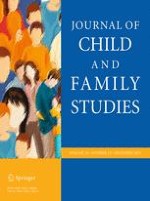21-03-2015 | Original Paper
Relationship Between Diagnosis of ADHD in Offspring and Current and Retrospective Self-Reports of Parental ADHD
Gepubliceerd in: Journal of Child and Family Studies | Uitgave 12/2015
Log in om toegang te krijgenAbstract
This study aimed to discover the relationship between parental self-reports of ADHD symptoms and the diagnosis of ADHD in offspring, to demonstrate the extent to which parental ADHD symptoms predict ADHD diagnosis in offspring, to examine the contribution of adult ADHD scales to ADHD diagnosis, and to provide findings on the psychometric utility of adult ADHD scales. The sample consisted of 6–12-year-old boys diagnosed with ADHD (n = 149), boys in the control group (n = 47) and both parents (n = 392). Amongst the many exclusion criteria was the comorbidity of neurological and psychiatric disorders. Parental self-reports of current ADHD symptoms were obtained using the Adult Attention Deficit Hyperactivity Disorder Scale (ADD/ADHD Scale), and past symptoms were retrospectively obtained using the Wender-Utah Rating Scale (WUR Scale). For children diagnosed with ADHD, the frequency of parents with ADHD symptoms was higher than the parents without ADHD symptoms; the significance was derived from the group in which both parents displayed ADHD symptoms. The ADHD symptom scores of the parents led to a high accuracy level when predicting ADHD in children (sensitivity) but led to a low accuracy level when classifying children without any diagnosis in the control group (specificity). The study disclosed the psychometric strengths and weaknesses of the ADD/ADHD and WUR scales for measuring parental ADHD symptoms and provided original findings on their psychometric properties.
